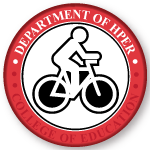Document Type
Article
Publication Date
8-2017
Publication Title
The Knee
Volume
24
Issue
4
First Page
761
Last Page
767
Abstract
Background
Patellar tendinopathy, a common condition of the knee, is often treated with patellar tendon straps to control pain during dynamic activity. Little is known regarding their effect on pain, landing kinematics and kinetics with their application. The purpose of this study was to determine if patellar tendon straps influenced pain, kinematics at landing and ground reaction forces in individuals with patellar tendinopathy versus healthy controls.
Methods
Thirty participants with patellar tendinopathy and 30 controls participated. They completed single-limb landings with and without patellar tendon straps while pain, three-dimensional kinematics and vertical ground reaction forces were measured. A multivariate analysis of variance was completed to determine the differences in strapping condition and group for the dependent variables.
Results
Individuals with patellar tendinopathy demonstrated a significant decrease in pain (no strap = 37.1 ± 22.1 mm (mean ± SD), strap = 28.0 ± 18.5 mm (mean ± SD)). With the strap at landing all participants displayed less hip rotation (F = 7.16, p = .01), knee adduction (F = 10.20, p = .002), ankle inversion (F = 4.60, p = .04), and peak vertical ground reaction force (F = 7.30, p = .009).
Conclusions
Patellar tendon straps reduced pain in those with patellar tendinopathy. Additionally, with the strap, individuals landed in a more neutral alignment and decreased landing forces which could provide a benefit to those with patellar tendinopathy.
Recommended Citation
Rosen, Adam B.; Ko, Jupil; and Brown, Cathleen N., "Single-limb landing biomechanics are altered and patellar tendinopathy related pain is reduced with acute infrapatellar strap application" (2017). Health and Kinesiology Faculty Publications. 32.
https://digitalcommons.unomaha.edu/hperfacpub/32
Table 1_Demo.docx (11 kB)
Table 2_Means-Kinematics.docx (16 kB)
Table 3_Means-vGRF.docx (11 kB)


Comments
This post-print version of the article is released under a Creative Commons Attribution Non-Commercial No Derivatives 4.0 License.
The original version of the article can be found here: https://doi.org/10.1016/j.knee.2017.03.003.